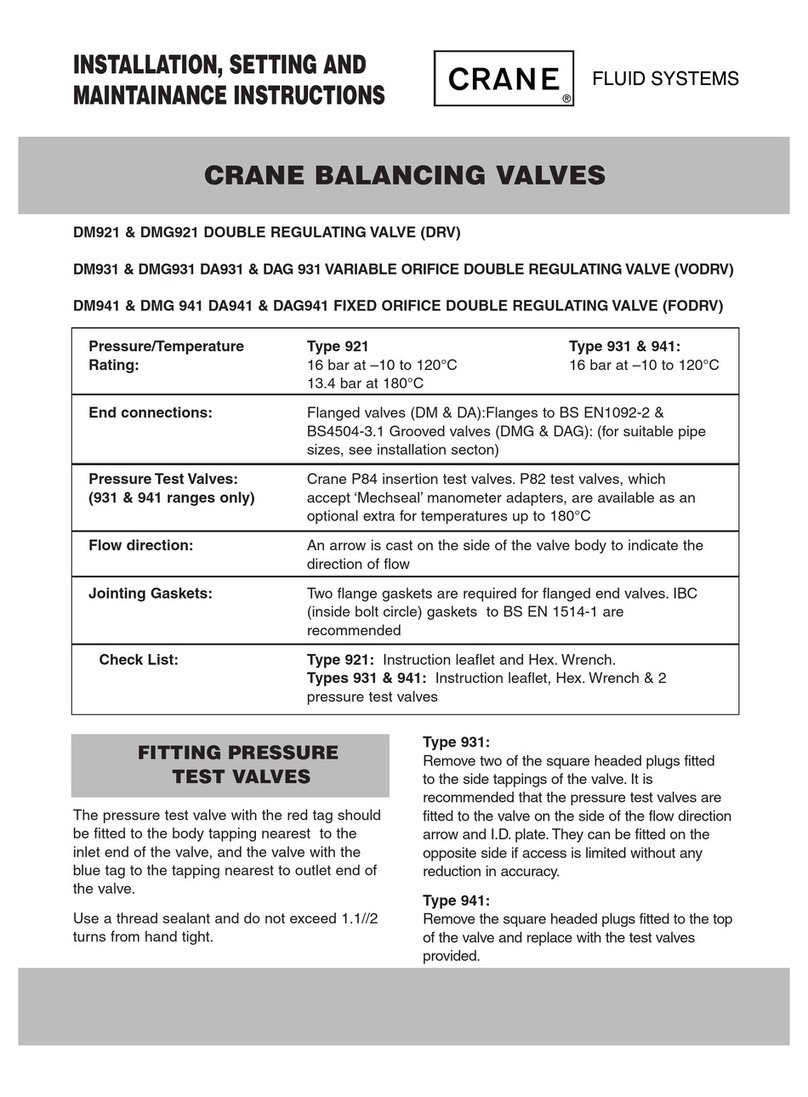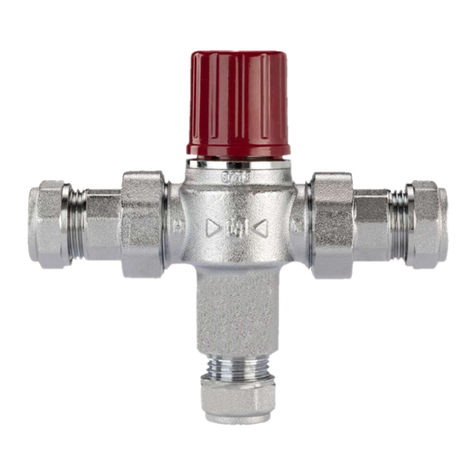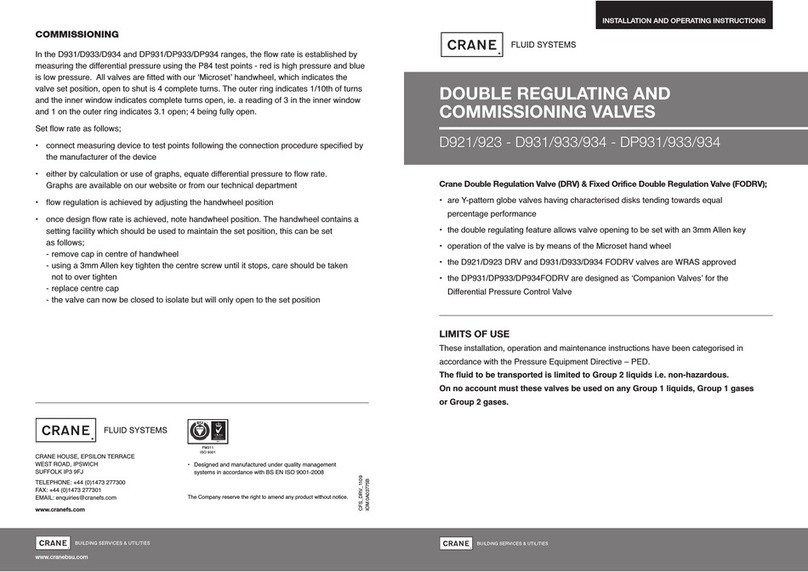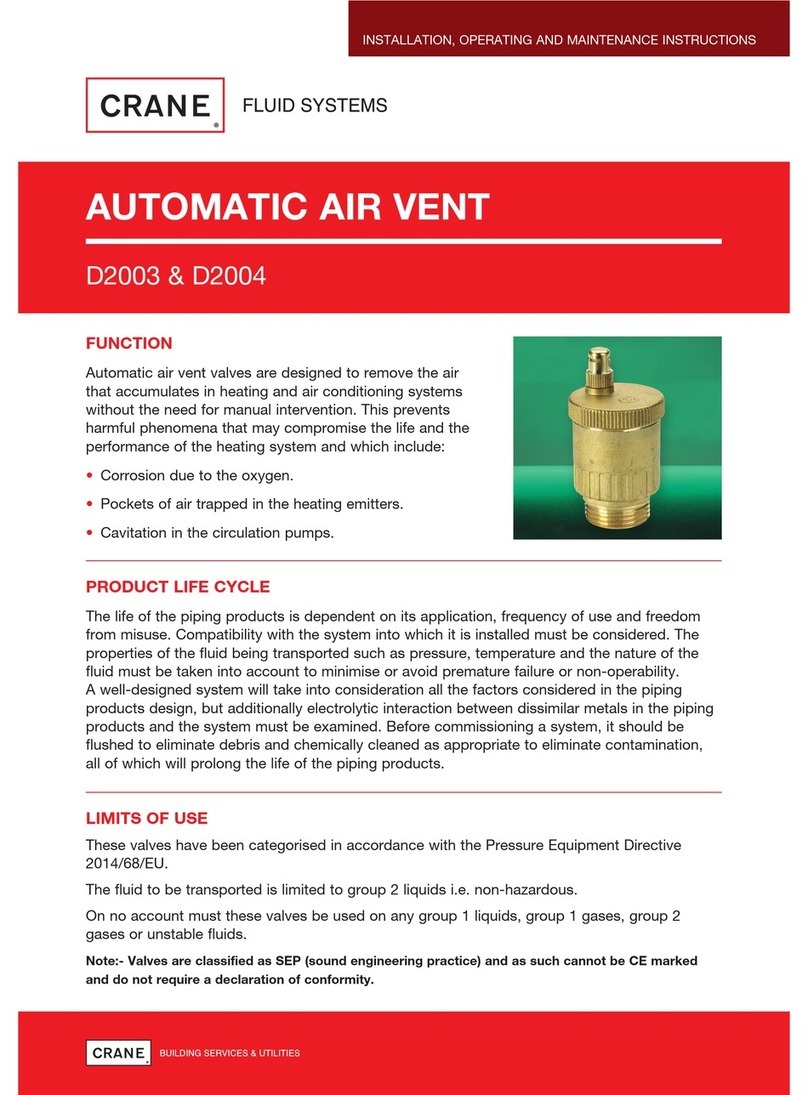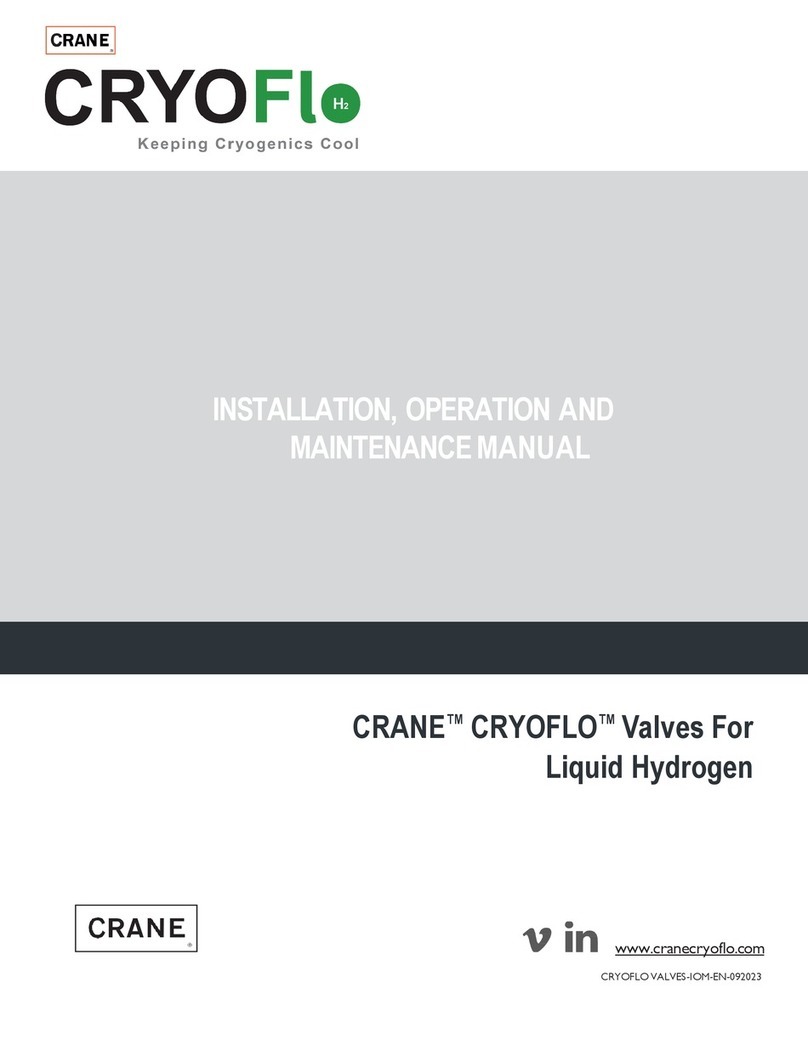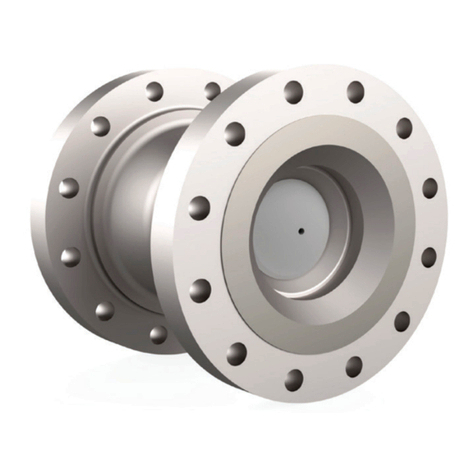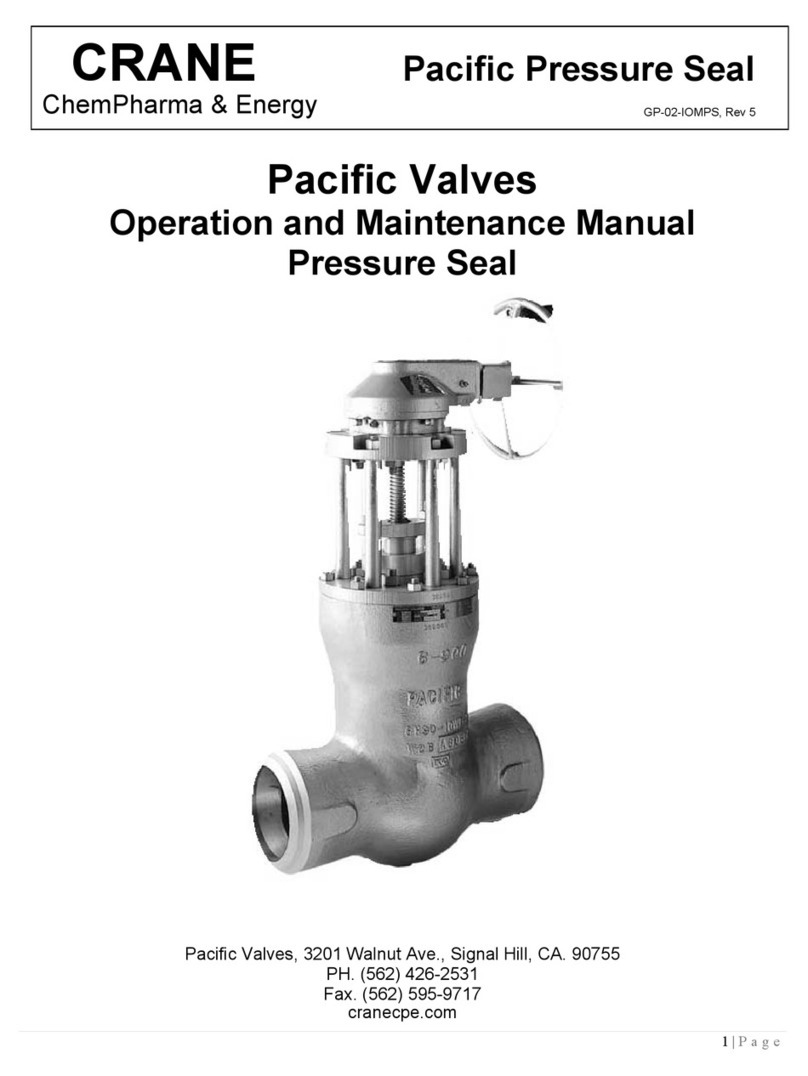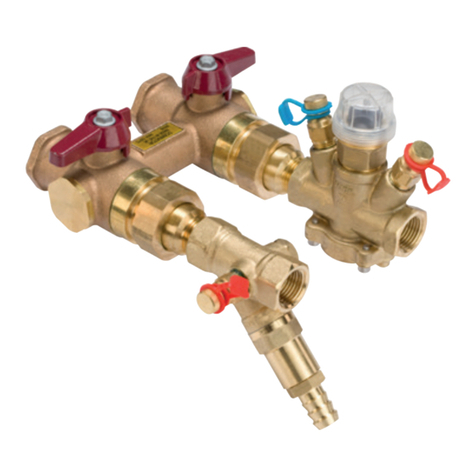
www.cranecpe.com
4
Installation, Operation & Maintenance
Make sure that valves that have been operated at
operating temperatures of > 50°C or < 20°C and the
pipeline connections cannot be touched by the operator,
in order to protect the operator from injury.
• The usual flow speeds analogue to EN 593:2004 Table
2 must be observed during permanent operation in
the pipeline system. Abnormal operating conditions
such as vibrations, pressure surges, erosion, cavitation
and more than small shares of solids in the medium
– in particular abrasive solids – must be clarified with
KROMBACH.
• Media to be conveyed may only have a very small
share of solids that can damage or block the seal
system.
• The use of abrasive media is not recommended.
• The valves should not be used for media that are
prone to inner deposits.
• If a valve is to be used for throttling in permanent
operation, this must be agreed when the order is
placed. The application limits must always be agreed
upon with KROMBACH (agreed with KROMBACH for
cavitation free operation).
• The application limits must always be agreed upon
with KROMBACH for cavitation-free operation.
2.1.1 Method of Operation
• Ball valves are actuated using a hand lever. (Actuation
through gear/drive see 2.7.5)
• A ball with cross-hole is used as a blocking fitting,
which either releases or blocks the full medium flow
through a swivel movement of 90°.
The valve is closed by turning the hand lever to the
right (clockwise).
The valve is opened by turning the hand lever to the
left (anti-clockwise).
Respective instructions are on the hand lever itself.
• No torque-enhancing aids may be used to actuate the
valve.
2.1.2 Design and technical data
The technical design of the valves corresponds to the
enclosed documentation.
All the dimensions, materials, special versions, accessories
and any further specifications can be found in the
enclosed ORDER-RELATED DOCUMENTATION.
The images in the exploded views are only design
examples.
2.2 Installation in the Pipeline
2.2.1 General Instructions
• Before installation in the pipeline, the valve must
be checked to make sure that it matches the
specification for the installation location
• Clean the valve of storage and transport dirt
• Remove the cap from the valve
• The connection pipeline and pipeline connection
flanges must be parallel and the correct distance
apart.
• When the system is being painted after valve
installation, the stem must remain free of paint.
• When media are used at an operating temperature of
under 0°C, the valve has to be dry before it is put into
operation.
• Pipelines designed for steam to flow through them
must be routed in such a way that condensation
draining is possible and water hammers are excluded.
• If fittings are insulated, care must be taken that the
stuffing box area remains accessible and controllable
in the operating state.
2.2.2 Installation position and Direction
The ball valves can be installed in any position, but can be
restricted by accessories (e.g. drives).
The normal installation position is to be preferred > stem
vertically upright.
The installation position with the stem hanging down-
wards must be avoided because operating medium can
spill over the hand lever if the stem seal is leaking.
If there is a danger of the valves freezing, only the normal
installation position is permissible, and the valves must
have a draining fitting in the central housing section.
The mode of operation must guarantee that the valve
does not become damaged by freezing medium.
Uni-directional valves need to be installed in the preferred
direction as indicated by the arrow on the tag of the valve.
ATTENTION
!
ATTENTION
!
